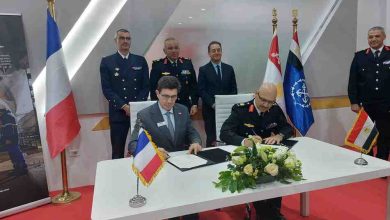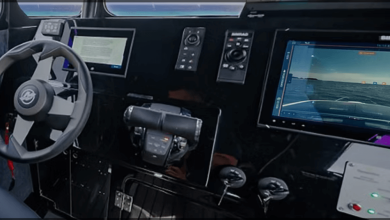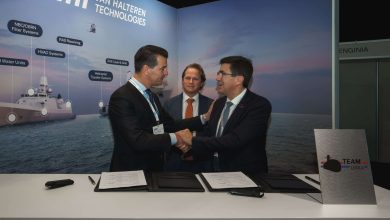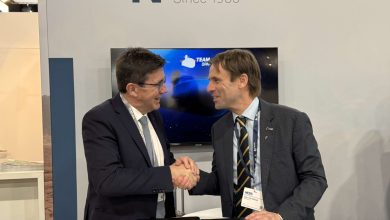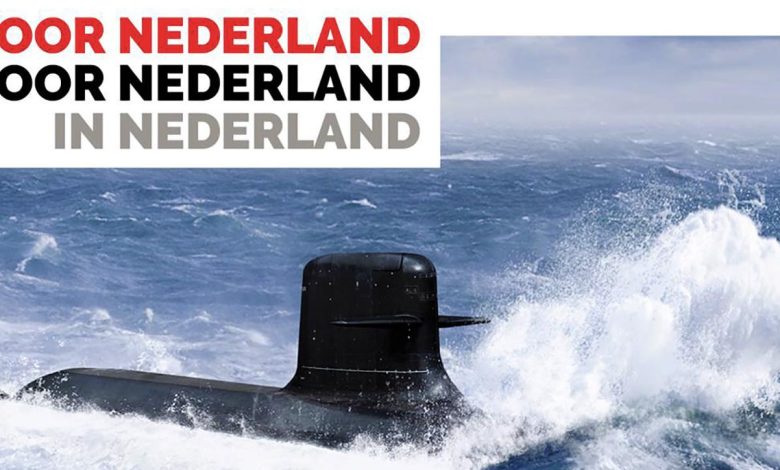
Naval Group Unveils Strategic Collaborations with Dutch Innovators and Research Hubs
On the 18th and 19th of November 2020, during the online NEDS 2020 occasion, Naval Group unveiled its collaborative involvement with Dutch partners in European research and development initiatives within essential naval sectors such as underwater noise minimization, propeller effectiveness, enhanced predictability, and the utilization of unmanned systems.
By participating in numerous European endeavors, Naval Group collaborates with Dutch industrial entities and knowledge centers to shape the future of naval defense. These initiatives unite leading European contributors in their respective domains and facilitate the discovery of synergies between the expertise of Dutch DITB and the adeptness of Naval Group.
Underwater noise reduction & acoustic concealment
— CRS LOW Noise
Naval Group is deeply engaged in the Cooperative Research Ships (CRS), established over fifty years ago. This non-profit organization has significantly influenced the realms of maritime and shipbuilding. The ongoing CRS LOWNOISE study (strategies and tools for managing and curtailing ship underwater radiated noise) aims to tackle the challenges of diminishing and regulating Underwater Radiated Noise (URN) from vessels, developing knowledge and resources to back both ship design and operational protocols. The project emphasizes the mitigation of propeller and machinery noise. It serves as an exchange platform among the principal participants in this domain: ABB, ABS, BERG Propulsion, Bureau Veritas, CETENA, DAMEN, DNV-GL, DRDC, Lloyd’s Register, MARIN, MTG, Naval Group, Navantia, QinetiQ, Wärtsilä.
— SATURN
The SATURN consortium unites foremost specialists in bioacoustics; population biology; marine mammal, fish, and invertebrate biology; maritime architecture and engineering; shipping; maritime legislation; stakeholder interaction and science communication. This consortium has three primary objectives. Firstly, to pinpoint the sounds that are most harmful to aquatic species and comprehend how they are created and disseminated. Secondly, to evaluate the immediate and cumulative long-term detrimental effects of noise from shipping and vessels on three representative groups of aquatic species in freshwater and marine environments (invertebrates, fish, and marine mammals).
Lastly, the consortium seeks to identify the most promising methods for measuring and mitigating the adverse effects of vessel noise that can be applied to both current and future ships.
SATURN will develop and contribute to the establishment of standards for terminology and methodologies to be utilized across all sectors working on underwater radiated noise. This robust community comprises researchers, practitioners, competent authorities, maritime operators, maritime/offshore/naval industries, and NGOs.
Enhancing propulsion efficiency
— CRS COMPROP2 – Predictive performance
Within the COMPROP2 initiative, teams are focused on devising integrated hydrodynamic and structural software aimed at forecasting the performance of composite materials, designated ComPropApp.
This software was mainly crafted by Marin (during the CRS COMPROP Project) to examine flexible propellers under natural water conditions. Naval Group handles composite material assessments (cavitation erosion evaluations, mechanical tests). These evaluations enable the teams to assess the influence of natural aging on materials. Results from mechanical tests on composite materials are utilized to compare with outcomes from structural tests and simulations.
— CRS PELS (Propeller Efficiency and Loads in Service, 2018-2020)
This initiative explores the hydrodynamic conduct and performance of ship propellers, along with the related forces, under non-standard conditions: featuring interaction drift, drift and velocity oscillations, immersion variations, and wave effects. This is supported by model assessments conducted by MARIN, while numerical modeling is executed by other collaborators, including Naval Group/Sirehna.
Dutch participants: MARIN, Damen, and Wärtsilä NL.
Enhancing sea state prediction and predictability
— CRS SCREAM (2020-2023)
This initiative addresses probabilistic/reliability analysis of vessel behavior and loads in extreme wave conditions. It particularly zeroes in on forecasting the likelihood of critical events (screening) using streamlined approaches, which will then be combined with more precise load predictions using high-fidelity models.
The Dutch partners connected with this project include MARIN and Damen.
— CRS SALSA (2020-2023)
The project investigates vessel behavior during low-speed and challenging weather or adverse conditions, along with the respective regulatory frameworks (safe return to port…). The approach relies on computational fluid dynamics for a clearer understanding of phenomena, which can then be leveraged for enhancing simpler maneuverability modeling tools (MANWAV…).
Dutch participants: MARIN, Damen, and Wärtsilä NL.
— CRS Roll Reduction 2 (2017-2020)
This working group aims to refine the modeling of vessel roll motions using computational fluid dynamics backed by experimental validation. The study of bilge keels is an essential focus.
Dutch participants: MARIN and Damen.
— CRS MORE (Manoeuvring Operations Requirements Evaluation, 2018-2021)
The objective of this working group is to deepen the understanding of hydrodynamic phenomena during vessel maneuvers at low speed, particularly for naval ships. The initiative concentrates on analyzing phenomena, their modeling, and the validation of the models.
Dutch participants: MARIN and Damen.
— CRS GREENWATER (2017-2020)
The project investigates predictive techniques for green water occurrences (hydrodynamic effects on bow flare, deck, and superstructure), aimed at forecasting green water event probabilities and simulating hydrodynamic flow to evaluate its consequences on vessel performance.
Dutch participants: MARIN and Damen.
— CRS DD (DATA DRIVEN METHODOLOGIES, 2019-2021)
The working group focuses on discerning the potential advantages of data science technologies within the maritime arena. SIREHNA (a subsidiary of Naval Group) is particularly keen on methodology inquiries and their applications to seakeeping and ship performance management.
Dutch participants: MARIN and Damen.
Deployment of unmanned systems
— INTERACT
Interoperability Standards for Unmanned Armed Forces Systems aims to establish a foundation for a future European interoperability standard for military unmanned systems. The technical knowledge and operational expertise available in Europe regarding control, supervision, and application of unmanned systems will be amalgamated for the conceptual definition of a future European cross-industry interoperability standard. This standard will facilitate the flexible deployment of unmanned assets in diverse configurations, including singular deployment, manned-unmanned collaboration, or as autonomous swarms regardless of organizational or national origin.
SIREHNA, a subsidiary of Naval Group, will collaborate with Nederlandse Organisatie Voor Toegepast Natuurwetenschappelijk Onderzoek Tno, a non-profit organization for applied scientific research with expertise in Intelligent Autonomous Systems and Stichting Nationaal Lucht- En Ruimtevaartlaboratorium, a non-profit research establishment specializing in Intelligence, Surveillance, Recognition (ISR) and Space Utilization (ASIS).
Naval Group stands as the European frontrunner in naval defense. Utilizing its remarkable expertise, unmatched industrial resources, and ability to forge innovative strategic collaborations, Naval Group seeks to fulfill its customers’ requirements. As a system integrator and principal contractor, the group designs, produces, and supports submarines and surface vessels. It also offers services to shipyards and naval bases.
The organization reports an impressive revenue of 3.7 billion euros and employs 15,168 personnel (data from 2019).



